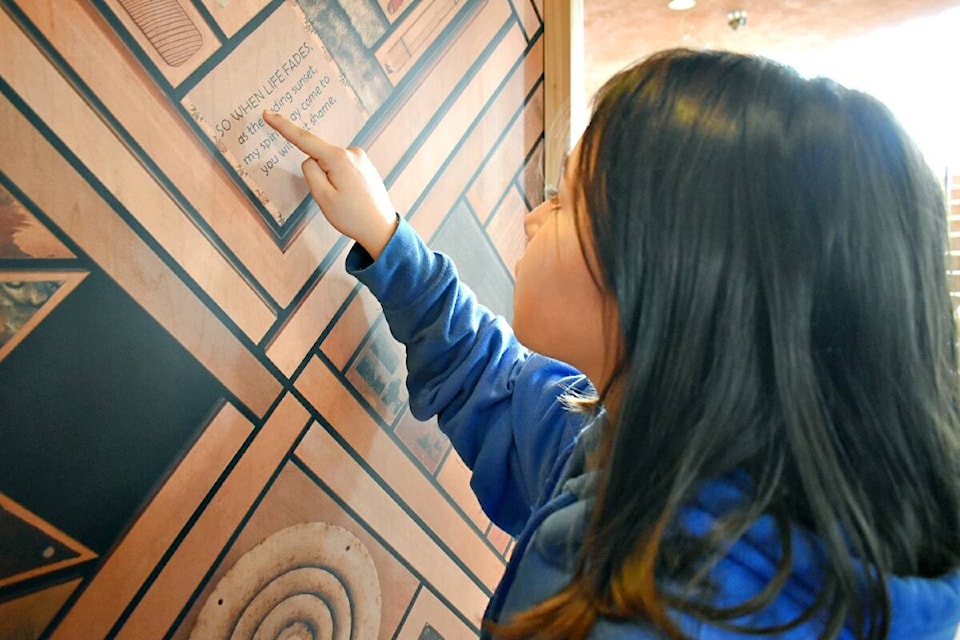Pieces of residential schools from across the country were witnessed by many School District 52 students on May 26, when they personally experienced the Witness Blanket on display at the Lester Centre.
The replica of the national monument, created by First Nations B.C. master carver Carey Newman has been on a travelling exhibit since December 2020 and is booked until 2024. The original is currently at the Canadian Museum of Human Rights (CMHR) in Winnipeg.
“The Witness Blanket stands as a national monument to recognize the atrocities of the Indian residential school era, honour the children, and symbolize ongoing reconciliation, ” the museum website explains.
Laura Leask, Sm’algyax education teacher at SD 52, said having the witness blanket come to Prince Rupert was a huge experience and opportunity for the students.
“We’re just in a time right now where students are learning about truth and reconciliation and what it means in our country,” she said.
“We’ve spent all this time learning about residential schools, orange shirt day and all of the truth behind everything. Now it’s about tieing it together for them. They can start learning about the reconciliation part. It says Indigenous and non-Indigenous people need to reconcile our relationship in our country.”
The large-scale art installation was inspired by a woven blanket and is a cumulative piece made from hundreds of items and artifacts reclaimed from residential schools, churches, government buildings and traditional and cultural structures from coast to coast.
“The blanket is a universal symbol of protection. For many of us, it identifies who we are and where we’re from – we wear them in ceremonies and give them as gifts. Blankets protect our young and comfort our elders,” Newman said.
The construction of the 40 ft long, cedar wood-panelled human rights monument took many years in the planning and making. The touring replica is made of photographic images of the original pieces.
Students of all ages attend the exhibition at the Lester Center with different lesson goals for each age group. Some students drew pictures of panels that held meaning for them, others were tasked with finding an image or object and explaining how that picture spoke to them.
“My role as an artist is to bear witness. The pieces themselves are witnesses. The people giving us the pieces are witnesses and at some level we all are — or we should all be witnesses,” the artist said.
Gathering these objects and the stories behind them took Newman and his team from coast to coast to coast. They travelled more than 200,000 kilometres, visited 77 communities and met more than 10,000 people, all while welcoming over 1,000 objects into their care.
A 90‐minute documentary feature titled Picking Up the Pieces: The Making of the Witness Blanket weaves residential school stories with Newman’s personal journey, examining how art can open hearts to the pain of truth and the beauty of resilience stated the CMHR.
“The makers of the documentary have made it freely available online to share the power of storytelling and testimony during a time of fear, uncertainty and social isolation. They invite you to bear witness.
This film shares the traumatic stories of Indian residential school survivors. Please watch and share with gentleness. If you or your family members have a history with residential schools, make sure before watching that you can connect with support,” the CMHR states on their website.”
K-J Millar | Editor and Multimedia Journalist
Send K-J email
Like the The Northern View on Facebook
Follow us on Twitter
“
